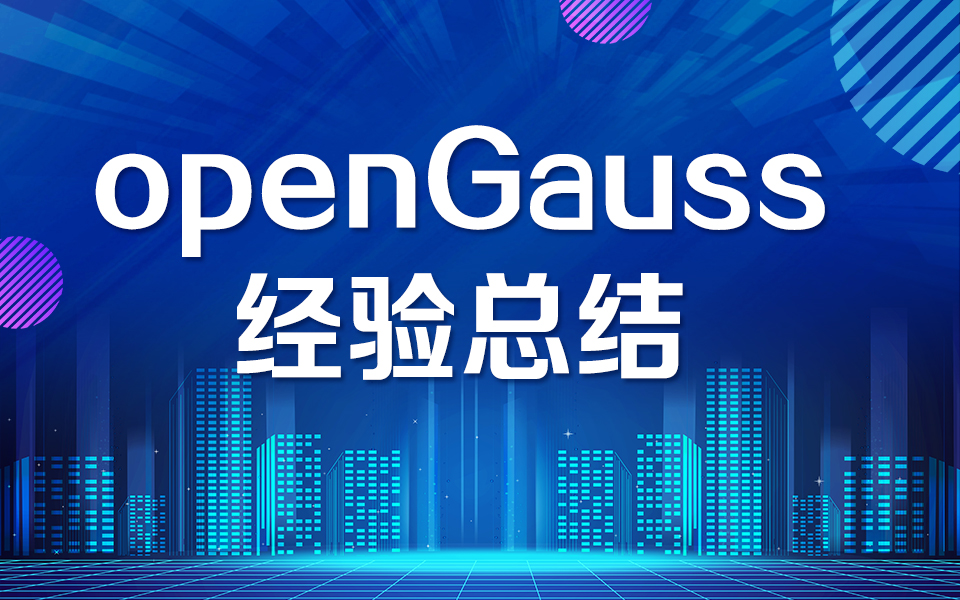Yolov5系列(3)-loss解析
Abstract在yolov5中,loss在训练中起到了决定性的作用,同时,yolov5的loss又与大部分传统的方法不同,它是基于网格的.在网格上生成相应的anchor框和其对应的cls以及conf,同时,box loss还采用了CIOU的方式来进行回归,很好的提高了回归的速度.并且针对传统yolo中正样本不足的情况.它还采用了,它还利用了一种样本扩充的策略,很大的提高了其最终的检测精度Intr
Abstract
在yolov5中,loss在训练中起到了决定性的作用,同时,yolov5的loss又与大部分传统的方法不同,它是基于网格的.在网格上生成相应的anchor框和其对应的cls以及conf,同时,box loss还采用了CIOU的方式来进行回归,很好的提高了回归的速度.并且针对传统yolo中正样本不足的情况.它还采用了,它还利用了一种样本扩充的策略,很大的提高了其最终的检测精度
Introduction
1.yolov5划定正负样本
yolov5会将最终的输出划分为一个w*h的网格.
对于每一个gt框,首先会判断gt框的中心落在哪一个网格中,这个网格会被标记为正样本,同时,这个网格所对应的三个anchor就是正样本,并且如果anchor的长宽比于gt的长宽比相差过大,那么,这个anchor也会被过滤掉
然后进行扩充gt样本. 样本扩充的依据是判断gt的中心点落在的网格相对的上下左右偏移量.( 例如,gt的中心在网格中偏向左上角,那么gt所在gird的上方和左方的gird也会被扩充为gt样本.同时,扩充的gird所对应的gt框是由原始的gt框移动一个单位到其所在的gird中) ,下面这张图可以很好的解释这一过程

目标中心点为图中的红色点,红色点在本网格的左上,则让本网格、其左、其上网格负责该目标检测;
同理目标中心点如果在右下,则让本网格、其右、其下网格负责该目标检测。为什么这样做,据说是为了扩充正样本。
这种做法可以使yolov5的gt框数量增加,很好的缓解了正负样本的不平衡.然而这种通过将gt移动的方法进行扩充正样本,我觉得对于小目标来说,是存在很多的问题的
最后,会计算3个loss函数,(1) box loss,计算anchor与gt的ciou,作为box loss,(2) obj loss,计算网格的confidence是否正确,使用BCEWithLogitsLoss (3)cls loss 计算与gt相对应的anchor的分类是否正确. 使用BCEWithLogitsLoss
我们通过代码来仔细研究这一过程
2,loss.py代码解析
下面的这几种loss可供使用者选择,每个loss都有各自的优点,
我们可以在compute loss类中更换以下的loss
def smooth_BCE(eps=0.1): # https://github.com/ultralytics/yolov3/issues/238#issuecomment-598028441
# return positive, negative label smoothing BCE targets
return 1.0 - 0.5 * eps, 0.5 * eps
class BCEBlurWithLogitsLoss(nn.Module):
# BCEwithLogitLoss() with reduced missing label effects.
def __init__(self, alpha=0.05):
super(BCEBlurWithLogitsLoss, self).__init__()
self.loss_fcn = nn.BCEWithLogitsLoss(reduction='none') # must be nn.BCEWithLogitsLoss()
self.alpha = alpha
def forward(self, pred, true):
loss = self.loss_fcn(pred, true)
pred = torch.sigmoid(pred) # prob from logits
dx = pred - true # reduce only missing label effects
# dx = (pred - true).abs() # reduce missing label and false label effects
alpha_factor = 1 - torch.exp((dx - 1) / (self.alpha + 1e-4))
loss *= alpha_factor
return loss.mean()
class FocalLoss(nn.Module):
# Wraps focal loss around existing loss_fcn(), i.e. criteria = FocalLoss(nn.BCEWithLogitsLoss(), gamma=1.5)
def __init__(self, loss_fcn, gamma=1.5, alpha=0.25):
super(FocalLoss, self).__init__()
self.loss_fcn = loss_fcn # must be nn.BCEWithLogitsLoss()
self.gamma = gamma
self.alpha = alpha
self.reduction = loss_fcn.reduction
self.loss_fcn.reduction = 'none' # required to apply FL to each element
def forward(self, pred, true):
loss = self.loss_fcn(pred, true)
# p_t = torch.exp(-loss)
# loss *= self.alpha * (1.000001 - p_t) ** self.gamma # non-zero power for gradient stability
# TF implementation https://github.com/tensorflow/addons/blob/v0.7.1/tensorflow_addons/losses/focal_loss.py
pred_prob = torch.sigmoid(pred) # prob from logits
p_t = true * pred_prob + (1 - true) * (1 - pred_prob)
alpha_factor = true * self.alpha + (1 - true) * (1 - self.alpha)
modulating_factor = (1.0 - p_t) ** self.gamma
loss *= alpha_factor * modulating_factor
if self.reduction == 'mean':
return loss.mean()
elif self.reduction == 'sum':
return loss.sum()
else: # 'none'
return loss
class QFocalLoss(nn.Module):
# Wraps Quality focal loss around existing loss_fcn(), i.e. criteria = FocalLoss(nn.BCEWithLogitsLoss(), gamma=1.5)
def __init__(self, loss_fcn, gamma=1.5, alpha=0.25):
super(QFocalLoss, self).__init__()
self.loss_fcn = loss_fcn # must be nn.BCEWithLogitsLoss()
self.gamma = gamma
self.alpha = alpha
self.reduction = loss_fcn.reduction
self.loss_fcn.reduction = 'none' # required to apply FL to each element
def forward(self, pred, true):
loss = self.loss_fcn(pred, true)
pred_prob = torch.sigmoid(pred) # prob from logits
alpha_factor = true * self.alpha + (1 - true) * (1 - self.alpha)
modulating_factor = torch.abs(true - pred_prob) ** self.gamma
loss *= alpha_factor * modulating_factor
if self.reduction == 'mean':
return loss.mean()
elif self.reduction == 'sum':
return loss.sum()
else: # 'none'
return loss
这个类是用来计算最终的loss的,它会返回三个loss,分别是box loss,cls loss, obj loss
class ComputeLoss:
# Compute losses
def __init__(self, model, autobalance=False):
super(ComputeLoss, self).__init__()
#获取模型在cpu还是gpu上运行的.之后生成的临时变量也会在相应的设备上运行
device = next(model.parameters()).device # get model device
#模型的参数
h = model.hyp # hyperparameters
# Define criteria
#定义cls loss和 obj loss
BCEcls = nn.BCEWithLogitsLoss(pos_weight=torch.tensor([h['cls_pw']], device=device))
BCEobj = nn.BCEWithLogitsLoss(pos_weight=torch.tensor([h['obj_pw']], device=device))
# Class label smoothing https://arxiv.org/pdf/1902.04103.pdf eqn 3
self.cp, self.cn = smooth_BCE(eps=h.get('label_smoothing', 0.0)) # positive, negative BCE targets
# Focal loss默认不会使用这个
g = h['fl_gamma'] # focal loss gamma
if g > 0:
BCEcls, BCEobj = FocalLoss(BCEcls, g), FocalLoss(BCEobj, g)
#获取模型的detect层
det = model.module.model[-1] if is_parallel(model) else model.model[-1] # Detect() module
#用来实现obj,box,cls loss之间权重的平衡
self.balance = {3: [4.0, 1.0, 0.4]}.get(det.nl, [4.0, 1.0, 0.25, 0.06, .02]) # P3-P7
#获取各个特征层的stride相关参数
self.ssi = list(det.stride).index(16) if autobalance else 0 # stride 16 index
#将各个loss加入到类的公共变量中
self.BCEcls, self.BCEobj, self.gr, self.hyp, self.autobalance = BCEcls, BCEobj, model.gr, h, autobalance
#参数获取
for k in 'na', 'nc', 'nl', 'anchors':
setattr(self, k, getattr(det, k))
#loss计算
#p为模型的最终输出
#targets为gt框的信息
def __call__(self, p, targets): # predictions, targets, model
device = targets.device
#初始化loss
lcls, lbox, lobj = torch.zeros(1, device=device), torch.zeros(1, device=device), torch.zeros(1, device=device)
#建立targets目标,会在下面仔细讲解
tcls, tbox, indices, anchors = self.build_targets(p, targets) # targets
#各个参数形状
#tcls [[num]] 存放了gt框所对应的网格的cls
#tbox [[x_offset,y_offset,w,h]] 存放了gt框所对应的网格的box,注意此处的x和y是相对于网格的偏移量
#indices [[image, anchor, grid indices]] 存放了gt对应的gird的信息,包括:image对应batchsize的哪张图片,anchor,对应哪个尺度的anchor,以及所在的网格
#anch [[num,2]]#anchor信息
# Losses
#遍历各个特征层,大小分别是80x80,40x40,20x20
for i, pi in enumerate(p): # layer index, layer predictions
b, a, gj, gi = indices[i] # image, anchor, gridy, gridx
#初始化target obj
tobj = torch.zeros_like(pi[..., 0], device=device) # target obj
#计算有多少个target
n = b.shape[0] # number of targets
if n:#如果存在target的话
#首先获取target所在的网格模型预测的pred 信息
ps = pi[b, a, gj, gi] # prediction subset corresponding to targets
#对xywh进行解码工作
# Regression
pxy = ps[:, :2].sigmoid() * 2. - 0.5
pwh = (ps[:, 2:4].sigmoid() * 2) ** 2 * anchors[i]
pbox = torch.cat((pxy, pwh), 1) # predicted box
#计算ciou
iou = bbox_iou(pbox.T, tbox[i], x1y1x2y2=False, CIoU=True) # iou(prediction, target)
#计算box的ciouloss
lbox += (1.0 - iou).mean() # iou loss
# Objectness
#获取target所对应的obj,网格中存在gt目标的会被标记为iou与gt的交并比
tobj[b, a, gj, gi] = (1.0 - self.gr) + self.gr * iou.detach().clamp(0).type(tobj.dtype) # iou ratio
# Classification
#如果类别数只有一个的话,将不会调用cls loss
if self.nc > 1: # cls loss (only if multiple classes)
#target所在的gird对应的cls的one hot格式
t = torch.full_like(ps[:, 5:], self.cn, device=device) # targets
t[range(n), tcls[i]] = self.cp
#计算loss
lcls += self.BCEcls(ps[:, 5:], t) # BCE
# Append targets to text file
# with open('targets.txt', 'a') as file:
# [file.write('%11.5g ' * 4 % tuple(x) + '\n') for x in torch.cat((txy[i], twh[i]), 1)]
obji = self.BCEobj(pi[..., 4], tobj)
lobj += obji * self.balance[i] # obj loss
if self.autobalance:
self.balance[i] = self.balance[i] * 0.9999 + 0.0001 / obji.detach().item()
if self.autobalance:
self.balance = [x / self.balance[self.ssi] for x in self.balance]
#提高loss各自的权重,可以在配置文件中设置
lbox *= self.hyp['box']
lobj *= self.hyp['obj']
lcls *= self.hyp['cls']
bs = tobj.shape[0] # batch size
loss = lbox + lobj + lcls
return loss * bs, torch.cat((lbox, lobj, lcls, loss)).detach()
#这段代码相对来说比较难以理解内部是怎么运行的
def build_targets(self, p, targets):
# Build targets for compute_loss(), input targets(image,class,x,y,w,h)
#这里na为锚框种类数 nt为目标数 这里的na为3,nt也为3
na, nt = self.na, targets.shape[0] # number of anchors, targets
#类别 边界盒 索引 锚框
tcls, tbox, indices, anch = [], [], [], []
#利用gain来计算目标在某一个特征图上的位置信息,初始化为1
gain = torch.ones(7, device=targets.device) # normalized to gridspace gain
# ai.shape = (na, nt),锚框的索引,三个目标,三种锚框,所以共9个元素
ai = torch.arange(na, device=targets.device).float().view(na, 1).repeat(1, nt) # same as .repeat_interleave(nt)
# targets.shape = (na, nt, 7)(3,3,7)给每个目标加上锚框索引
targets = torch.cat((targets.repeat(na, 1, 1), ai[:, :, None]), 2) # append anchor indices
g = 0.5 # bias
#off偏移量
off = torch.tensor([[0, 0],
[1, 0], [0, 1], [-1, 0], [0, -1], # j,k,l,m
# [1, 1], [1, -1], [-1, 1], [-1, -1], # jk,jm,lk,lm
], device=targets.device).float() * g # offsets
for i in range(self.nl):
#获取当前的锚框尺寸
anchors = self.anchors[i]
gain[2:6] = torch.tensor(p[i].shape)[[3, 2, 3, 2]] # xyxy gain
# 将xywh映射到当前特征图,即乘以对应的特征图尺寸
# Match targets to anchors
t = targets * gain
if nt:
# Matches
#r为目标wh和锚框wh的比值,比值在0.25到4即采用该种锚框预测目标
r = t[:, :, 4:6] / anchors[:, None] # wh ratio
#将比值和预先设置的比例anchor_t对比,符合条件为True,反之False
j = torch.max(r, 1. / r).max(2)[0] < self.hyp['anchor_t'] # compare
#根据j筛选符合条件的情况
# j = wh_iou(anchors, t[:, 4:6]) > model.hyp['iou_t'] # iou(3,n)=wh_iou(anchors(3,2), gwh(n,2))
t = t[j] # filter
# Offsets
#得到相对于左上角的目标
gxy = t[:, 2:4] # grid xy
#得到相对于右上角的目标
gxi = gain[[2, 3]] - gxy # inverse
#这里是重点,也是比较难理解的部分,jk是判断gxy更偏向哪里,左?上?
j, k = ((gxy % 1. < g) & (gxy > 1.)).T
#jk是判断gxi更偏向哪里,下?右?
l, m = ((gxi % 1. < g) & (gxi > 1.)).T
j = torch.stack((torch.ones_like(j), j, k, l, m))
#yolov5不仅用目标中心点所在的网格预测该目标,还采用了距目标中心点的最近两个网格
#所以有五种情况,网格本身,上下左右,这就是repeat函数第一个参数为5的原因
t = t.repeat((5, 1, 1))[j]
offsets = (torch.zeros_like(gxy)[None] + off[:, None])[j]
else:
t = targets[0]
offsets = 0
# Define
b, c = t[:, :2].long().T # image, class
gxy = t[:, 2:4] # grid xy
gwh = t[:, 4:6] # grid wh
gij = (gxy - offsets).long()
gi, gj = gij.T # grid xy indices
# Append
a = t[:, 6].long() # anchor indices
indices.append((b, a, gj.clamp_(0, gain[3] - 1), gi.clamp_(0, gain[2] - 1))) # image, anchor, grid indices
tbox.append(torch.cat((gxy - gij, gwh), 1)) # box
anch.append(anchors[a]) # anchors
tcls.append(c) # class
return tcls, tbox, indices, anch
我们可以发现yolov5的代码具有很大的灵活性,从代码中更加不同的场景,不同的情况,选择不同的loss,可以达到非常好的效果.但是在样本扩充这一块的内容,我觉得对于小目标来说还是有所欠缺的,可以采用其他的策略来进行样本扩充
更多推荐
 已为社区贡献1条内容
已为社区贡献1条内容









所有评论(0)